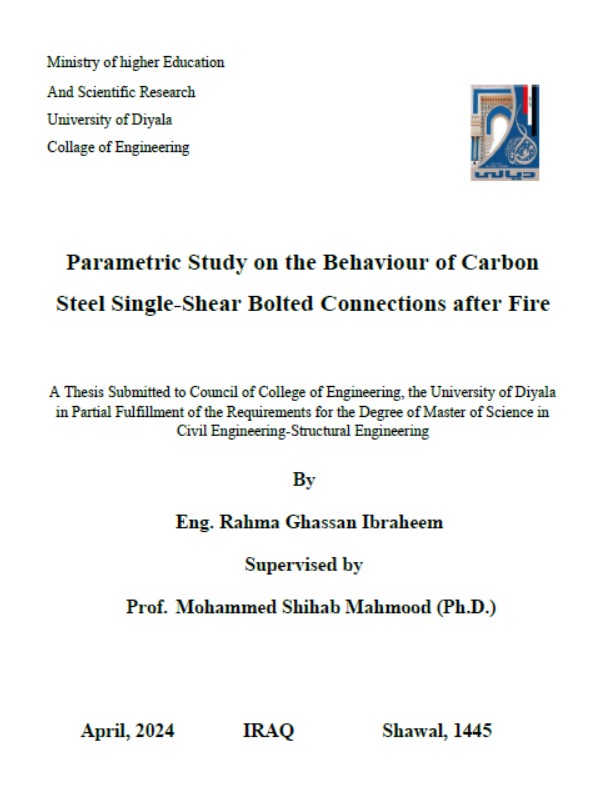Abstract
The evaluation of steel building after fire is important in way to determine the ability of reusing the post fired steel elements. This research is aimed at studying the post fire behaviour of single shear bolted connections. It investigates the effect of some of the influential parameters such as end distance, edge distance, spacing between bolts and bolts diameter on the behaviour of the connection after exposure to fire. The specimens (36 specimens) divided into four groups. The specimens thickness was 2mm in two groups and 4mm in the other two groups. The specimens were heated to (1000֯ C) for 120 minutes and cooled by water. For each thickness a coupon used in the same heating and cooling situations. The coupons were used to find the mechanical properties (yield stress, ultimate stress, and modulus of elasticity) after fire. After heating and cooling of the specimens, some physical changes were noted, the first was the deformation (curvature) because of the difference between the furnace and water. The curvature amount was greater as the surface area of the specimen increased. Also, a decrease in the thickness of the specimens was recorded because of the peeling of the specimens surface after cooling with water. The reduction in the thickness of the specimens was about (25%) for 2mm thickness specimens and about (20%) for 4mm thickness specimens, this reduction in thickness must be taken into consideration in the redesign of steel structure after it has been exposed to fire. Majority of the specimens failed by net tensile fracture (61%). Followed by the specimens that failed by gross section fracture (33%) and the specimens which failed by end fracture failure (6%). The curling displacement affect the results where according to the results of the tests, the strength increased as the end distance of the specimens increased. There are cases in which the opposite happened, and the reason for this was that the displacement of the curling was higher for specimens with a larger end distance, which led to a decrease in the load required for the specimen to fail. There is also other reason, which is the difference in the failure mode of the specimens. From the results, it was noted that the specimens with relatively large dimensions, which had the end distance less than the code limits, follows a different failure mode compared with its counterparts of the specimens with a larger end distance and that is within the code limits. The limits of distances (end, edge, gage and pitch distances) in this study was taken to study the effect of the limitation which used in the codes and if it is possible to take limits less or more than codes limitations. Also, this study presents an analytical modeling for specimens strength and compared with the experimental results of specimens.





